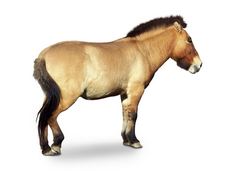Genome study reveals horse history
The HORSEDOMESTICATION (Understanding horse speciation and domestication through comparative palaeogenomics) project began by improving techniques for characterising complete sequences of ancient genomes. New biochemical features of ancient DNA molecules from bone fossils were discovered that can be targeted to improve ancient genome sequencing. Researchers also developed bioinformatics tools that can help authenticate ancient DNA datasets by means of nucleotide misincorporation patterns and DNA damage quantification. These developments enabled scientists to investigate the first draft genome from an early Middle Pleistocene horse from around 700 000 years ago. Scientists also investigated the genomes of a Late Pleistocene horse from 43 000 years ago, a Przewalski’s horse and the genome of five domestic breeds and the domestic donkey. This work revealed an origin for the genus Equus 4 million years ago followed by a large demographic expansion and collapses, often in parallel with major climatic changes. The second part of the project involved sequencing the complete genomes of each member of the horse family. It also used DNA from museum specimens to sequence the Quagga, which became extinct in the 19th Century. The large genome data set was used to reveal the horse’s evolutionary history by timing when new species arose and deciphering the genetic basis underlying the adaptation of species to their environment. In addition, the DNA of two ancient horses from the Upper Paleolithic – a time when horses hand not domesticated – was sequenced. This was compared with the genomes from a range of domestic breeds in order to understand the genetic basis of domestication. It was revealed that a large fraction of the genome originates from a previously unknown group of horses. Scientists also identified 125 genes that represented early selection targets from the domestication process. These were related to the animal’s locomotion, physiology, development, behaviour and cognition. Finally, an extensive genome dataset for Przewalski’s horses (the last truly wild horse population on the planet) was generated. The information collected helped to refine the evolutionary relationship with domesticated horses. Furthermore, it provided guidance for conservation programmes aimed at the long-term survival of this endangered group of horses.







